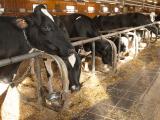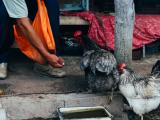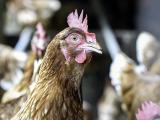Feb 14, 2007 (CIDRAP News) – Egypt’s health ministry today announced that a 37-year-old woman has tested positive for H5N1 avian influenza, marking the country’s third case of 2007.
A health ministry statement said the woman is from Fayyum governorate, about 60 miles south of Cairo, Agence France-Presse (AFP) reported today. The health ministry said she was hospitalized 2 days ago after experiencing a high fever and bronchitis and was transferred to a government hospital in Cairo, where she is being treated with osteltamivir. If her case is confirmed by the World Health Organization (WHO), it will be listed as Egypt’s 21st overall.
She is from the same area as Egypt’s last WHO-confirmed case, in a 19-year-old woman who died on Feb 2.
The latest patient is responding well to treatment, and there’s no indication that she is infected with a moderately oseltamivir-resistant strain that has infected some of Egypt’s recent H5N1 patients, WHO official John Jabbour told Reuters today. The woman kept birds in her home and had been exposed to infected poultry, according to the Reuters report.
In a related development, Egyptian health minister Hatem el-Gabali told reporters at a WHO conference in Cairo yesterday that the two latest WHO-confirmed case-patients showed no signs of having the oseltamivir-resistant strain, Reuters reported yesterday.
In January, the WHO said the resistant H5N1 strain, which first surfaced in Vietnam in 2005, had been detected in a man and his niece from the Nile delta province of Gharbiyah. Both died in late December 2006. El-Gabali told reporters the same resistant strain killed a third member of the same family; previous news reports said the patient was a 30-year-old sister of the man.
In other avian flu developments, the United Kingdom's Department for Environment, Food and Rural Affairs (DEFRA) announced yesterday that a laboratory analysis had shown that the H5N1 strains found in recent English and Hungarian poultry outbreaks were 99.96% similar.
Ian Brown, chief avian virologist for the UK Veterinary Laboratory Agency, said other European H5N1 viruses have shown close relationships to the recent outbreak strains, but “the comparison between the UK and Hungarian viruses reveals a high level of genetic match which cannot be said of other European virus strains.”
Hungarian animal health officials, however, have disputed the evidence. Lajos Bognar, deputy chief veterinarian, told Reuters yesterday that even if the two viruses are identical, it doesn’t prove transmission from Hungary to the Bernard Matthews farm in Suffolk.
Meanwhile in Vietnam, government officials on March 1 will lift a ban on hatching of ducks and geese, but will require that farmers vaccinate all restocked waterfowl and locate hatching facilities away from residential areas, the Associated Press (AP) reported yesterday.
The government banned hatching ducks and geese in 2005 to slow the spread of avian influenza by waterfowl that carry the virus without showing signs of illness. However, Hoang Van Nam, Vietnam’s deputy director of animal health, told the AP that authorities found that vaccinated birds weren’t the cause of recent outbreaks in eight Mekong Delta provinces.
See also:
Feb 6 WHO statement
http://www.who.int/csr/don/2007_02_06/en/index.html



















